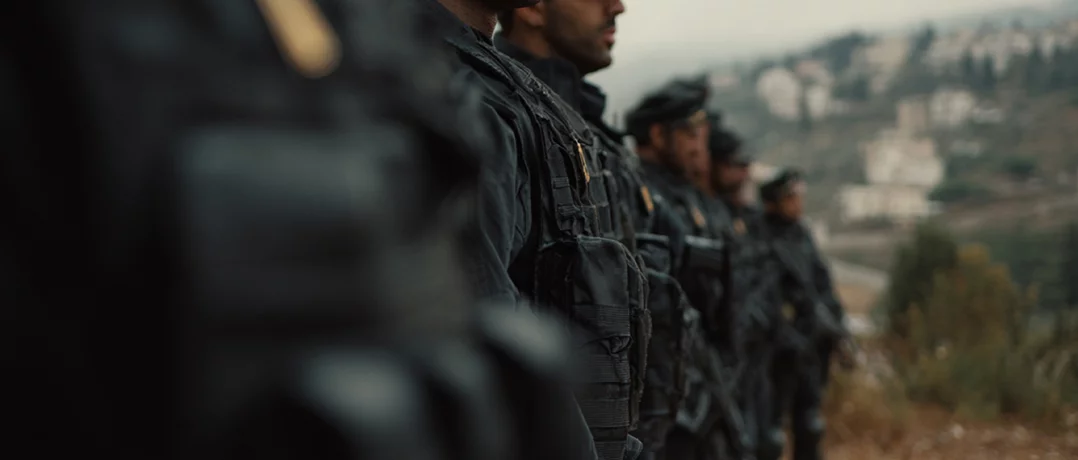Investigating how Hezbollah’s Sunni proxy infiltrated Sidon, transforming resistance into a tool of control.
Saida under siege: The hidden Sunni wing of Hezbollah
Saida under siege: The hidden Sunni wing of Hezbollah


On October 3, 1997, former Hezbollah Secretary-General Hassan Nasrallah announced at a press conference the creation of the “Lebanese Resistance Brigades against the Israeli Occupation,” later known simply as the Resistance Brigades, as a cross-sectarian resistance formation. More than 25 years later, on the first anniversary of Nasrallah’s assassination attempt, the Brigades’ role in the latest conflict was limited to a statement describing resistance as “a space for dialogue and awareness.”
Yet the statement’s gentle tone, closer to NGO language than that of a paramilitary force misrepresents the Brigades’ true function. They were neither a forum for dialogue nor a front against Israel; rather, they operated as a military wing of Hezbollah, infiltrating anti-Hezbollah communities through young recruits drawn from those very environments. In Sidon, the Brigades played their largest and costliest role: the full subjugation of the southern city under Hezbollah’s control.
From the May 7 events that extended to Sidon in 2006, to the Brigades’ role before and after the 2013 Abra incidents, the objective was never merely to counter Sheikh Ahmed al-Asir. The goal was long-term domination over Sidon’s opposition, regardless of its origin, using multiple tools, chief among them, the Resistance Brigades, Hezbollah’s Sunni proxy. This strategy allowed Hezbollah to instigate Sunni-Sunni clashes, neutralizing its own image while using the Brigades as a buffer.
Today, Hezbollah’s control in Saida persists in multiple forms, most recently through a Nasrallah cartoon exhibition in the city’s market, organized by Imam al-Mahdi Scouts, which provoked little protest, unlike the Raouche incident in Beirut. The key questions remain: How did Hezbollah assert control through the Brigades? How did their role evolve? What were their major operations? And what is Hezbollah’s strategy now, as funding declines and Sunni clerics, once its mouthpieces, return to their previous professions?
Hezbollah’s Sunni wing
One of the first young Sidonians to join the Resistance Brigades in 1998 recalls the early recruitment stages. At the time, Hezbollah’s Al-Manar TV published phone numbers for applicants. Thousands were eager to join a resistance that accepted non-Shia members, many coming from parties that opposed Israel during the civil war.
Hezbollah organized meetings for thousands of young men in apartments across southern Beirut. Sami (a pseudonym) remembers the first interview:
"Each room had three curtains separating candidates. An investigator questioned each person, recording names, addresses, detailed personal histories, family information, and political affiliations. The interview ended with ‘we will stay in touch.’ Those called for a second interview had higher chances of final acceptance."
After about five months, applicants were categorized. Most youth affiliated with Islamic parties were excluded, while leftist, non-sectarian party members, such as the Popular Nasserist Organization, were accepted. Over the following years, the Brigades systematically recruited from these groups, leading to tensions with Osama Saad’s organization and culminating in the Nazlet Sidon battle on January 3, 2013.
Since its founding, Hezbollah ensured that the Resistance Brigades operated independently at the member level, though top leadership remained fully linked to Hezbollah. This provided two key advantages: it shielded Hezbollah from infiltration by rank-and-file members, while ensuring the Brigades executed Hezbollah’s agenda. In effect, the Brigades acted as a Trojan horse, penetrating other communities.
The shadow wing
After screening, recruits underwent military training in Hezbollah camps in the Beqaa Valley, separate from regular Hezbollah fighters. Training included weapon handling, daily preparatory courses, and a three-month specialist course. Religious lessons often led some recruits to convert to Shia Islam; those who did were transferred to Hezbollah following loyalty tests.
Drug users represented the ideal Brigade recruit: aggressive, controlling Sunni-majority neighbourhoods by force, aligning with Hezbollah’s objective of subjugating dissenting communities. Hezbollah aimed to penetrate every Saida neighbourhood, reaching peak control before the 2013 Abra events.
From May 7 to Abra
Key moments included May 7, 2008, when Hezbollah avoided a direct armed incursion, relying instead on the Brigades to intimidate residents and block streets openly. These young Sunnis acted as Hezbollah’s instruments to infiltrate and dominate the community.
Recruitment targeted unemployed youth, offering drugs, weapons, and political cover, while Sunni clerics were co-opted to lend religious and political legitimacy. Between 2012 and 2013, the Brigades resurfaced ahead of Abra, engaging in armed clashes with Sheikh Asir supporters and other opponents of Hezbollah. Some conflicts even involved local electricity generator cartels, whose owners joined the Brigades to dominate rivals.
Weeks before Abra, the Brigades carried out armed attacks on shops opposing Hezbollah, intimidating customers and destroying property. Complaints rarely reached court due to political cover. After Abra, hundreds of Asir supporters were arrested while Brigade members remained untouched. The peak of political protection was evident in the cases of Lebanon al-Azi and Ali Samhoun, killed in pre-Abra demonstrations: no Brigade or Hezbollah members were arrested, and verdicts were issued in absentia.
Through intimidation, torture, and selective prosecution, the Resistance Brigades “tamed” Sidon, maintaining unaccountability while reinforcing control.
The intelligence role
After Abra, the Brigades intensified intelligence operations, monitoring Sidon youth loyal to Asir or opposing Hezbollah. Targets faced a stark choice: join the Brigades with a salary or face fabricated charges, forcing some to enroll under duress.
Incentives were tailored: drug users received drugs, aggressors gained weapons, influence, and political protection. Salaries were distributed by neighborhood Brigade leaders. Medical care, fully provided until 2017, was the strongest lure. Combined with the 2016 presidential settlement and muted political discourse from the Hariri camp, Hezbollah ensured Sidon’s opposition remained subdued, treating residents as subjects while the Brigades and Hezbollah acted as dominant authorities.
Waning political clout
With political funding depleted, the Brigades’ political influence declined. Remaining members remain motivated by power, weapons, and intimidation, while some founding Sunni clerics returned to previous professions, disappearing from public representation of Hezbollah.
Today, active Brigades operate in three Sidon neighborhoods, numbering over 60 members. Hezbollah now operates directly through its members, building networks with influential locals and embedding itself in the communities.
The question remains: Can Saidas’s opposition recover, reducing Hezbollah’s quasi-state control in the new era?


